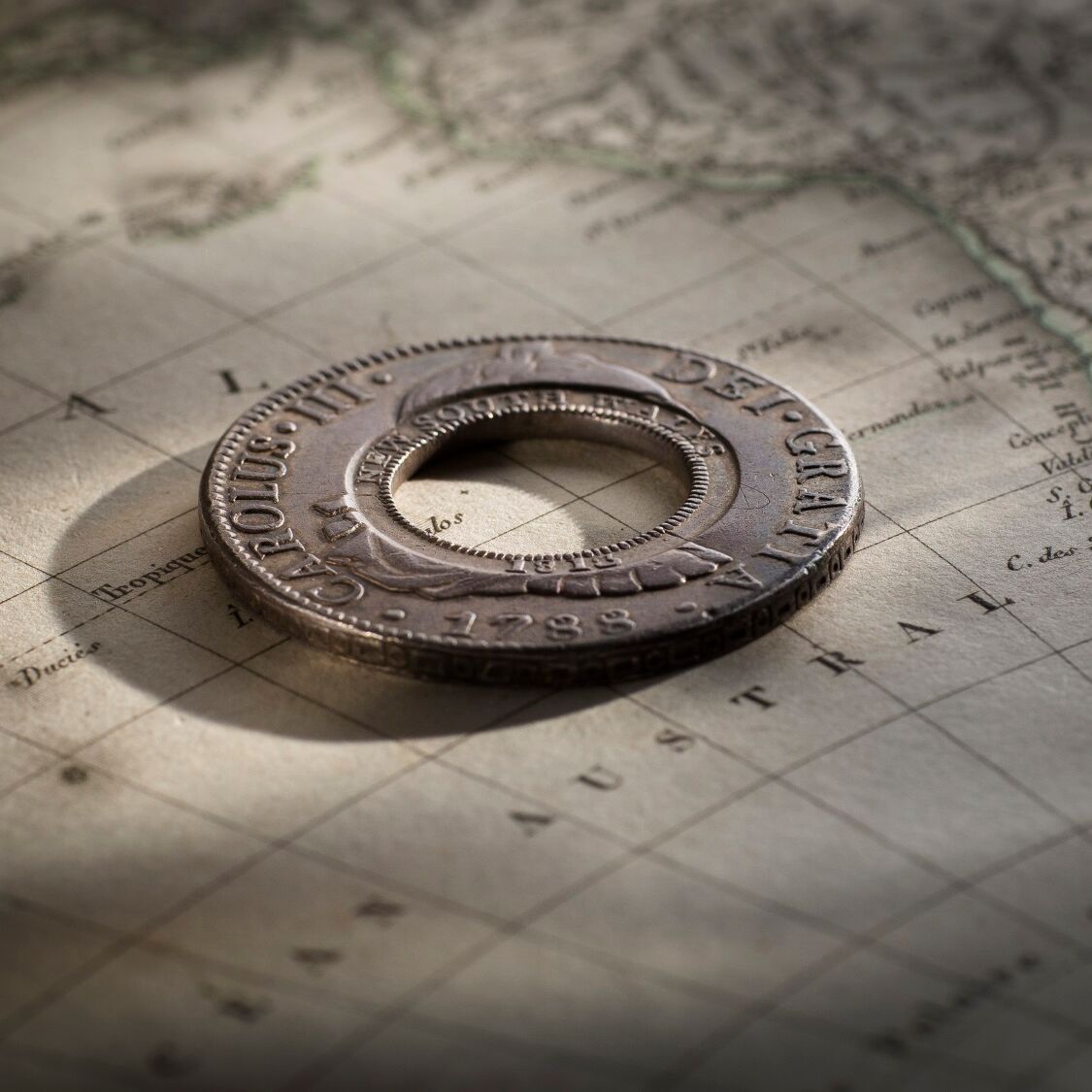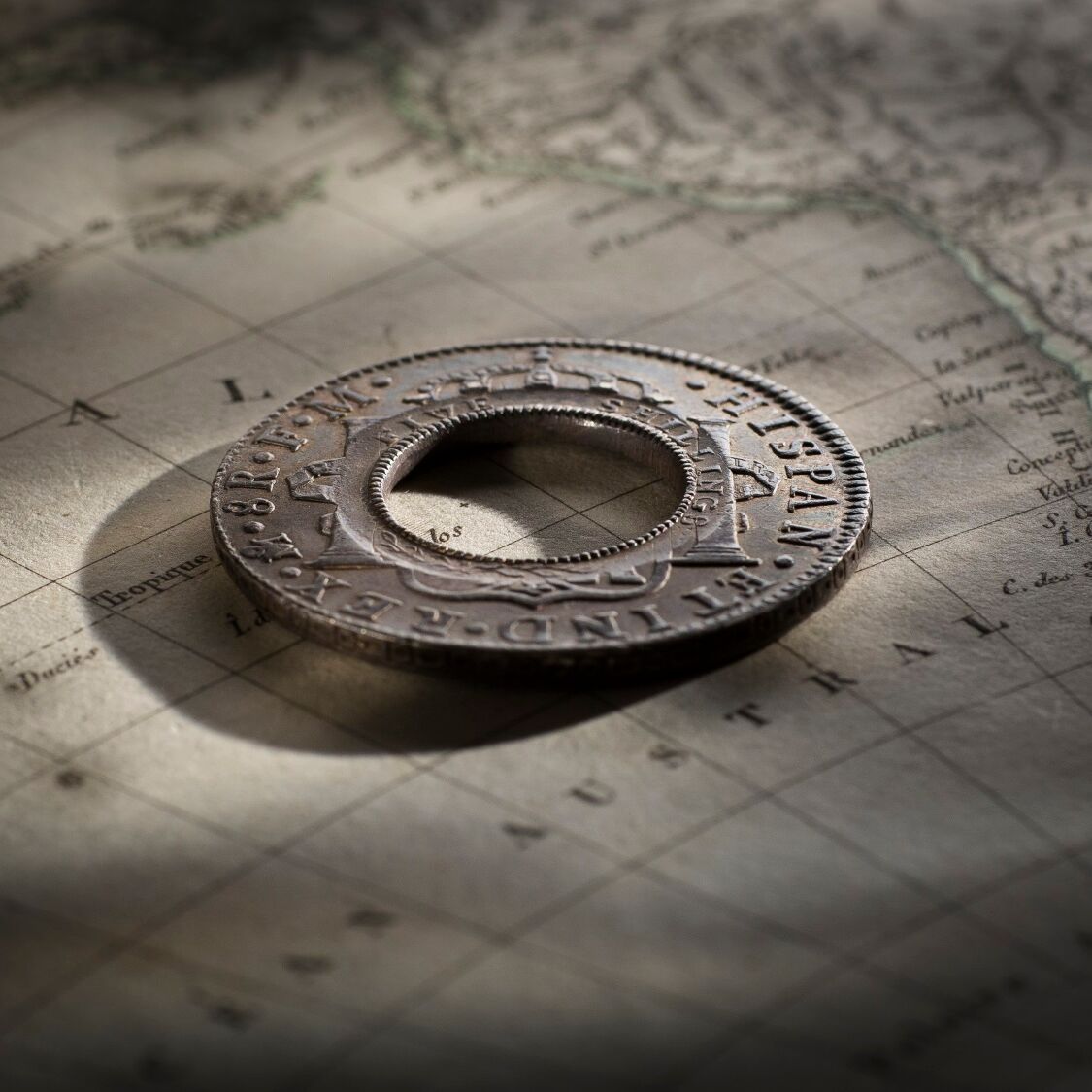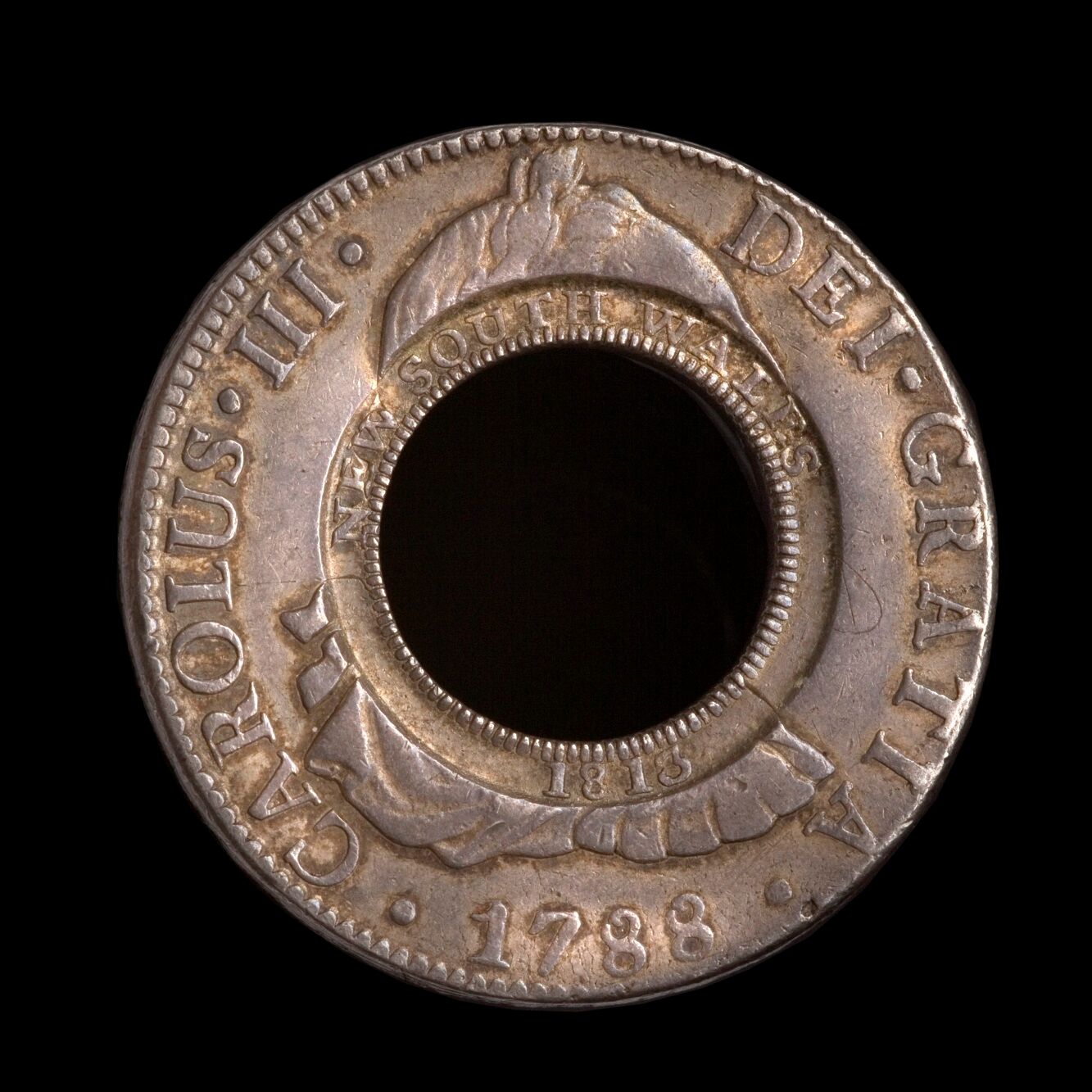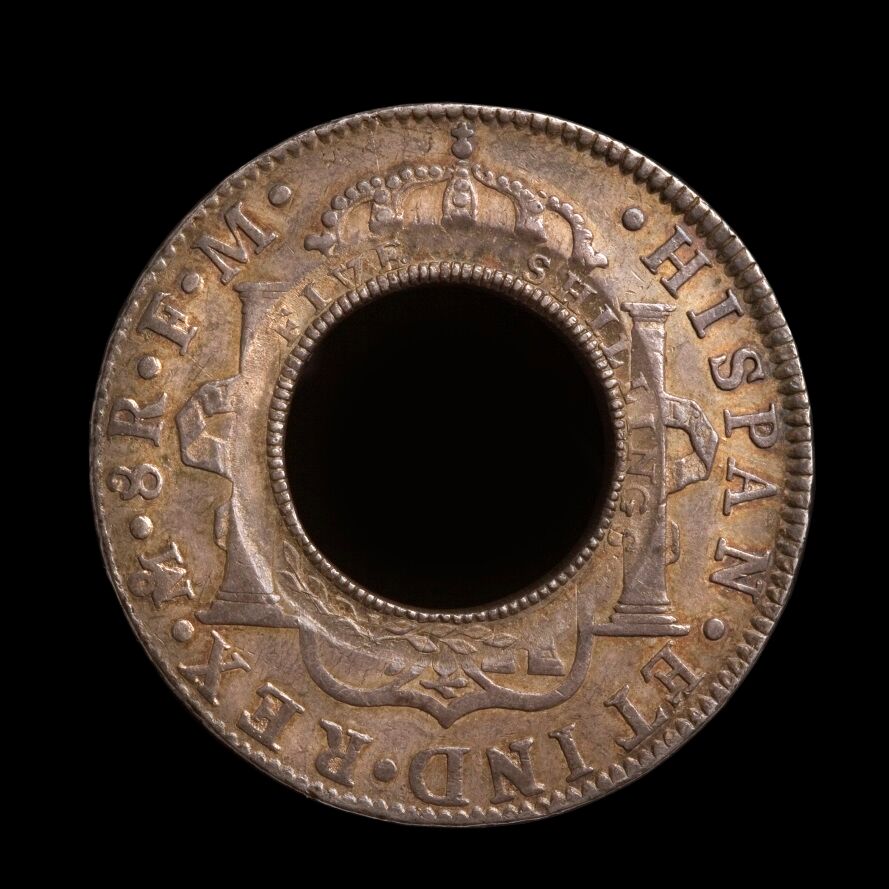1813 Holey Dollar struck from a Charles III, 1788 Mexico Mint Spanish Silver Dollar.



Both counter stamps run perpendicular to the original coin.

And on the flip side, the value Five Shillings is at the top, perfectly aligned.
A comment on the original 1788 Spanish Silver Dollar.
The quality of the original Spanish Silver Dollar is About Extremely Fine and superb as such.
It is a statement of fact that finding a high quality Charles III Holey Dollar is far harder than finding one depicting the portrait of Charles IIII.
And the reason?
William Henshall cut the hole in the Spanish Silver Dollar in 1813. A Spanish Silver Dollar that was struck in 1788 (Charles III) had 25 years of circulation before Henshall got his hands on it.
As compared to a Spanish Silver Dollar minted in 1807 (Charles IIII), that had only 6 years of circulation before Henshall got involved.
Vertically aligned counter stamps.
This particular Holey Dollar displays the most desirable position for the counter stamps in relation to the original coin.
Both counter stamps run perpendicular to the original coin.
So at the top we have New South Wales, in alignment with 1813 which is again in alignment with 1788.
And on the flip side, the value Five Shillings is at the top, perfectly aligned.
There is some suggestion … and it is only a suggestion that this particular coin was never intended to go into circulation, but was struck as a presentation piece under specific instructions from Governor Lachlan Macquarie.
Historians note that vertical counter stamps were struck on a Holey Dollar laid by Governor Macquarie in the foundation stone of the Lighthouse at the ‘Gap’ in New South Wales.
This Holey Dollar is the 'text book' coin, a classic piece. The very reason why it was selected by the Macquarie Group as the representative Holey Dollar for their web advertising.
A comment on provenance:
There is no doubt that provenances count and this Holey Dollar has one of the oldest provenances. And a revered one at that.
- This Holey Dollar made its first public appearance in 1892, seventy nine years after it was struck.
- It was sold at auction by Sotheby’s London 3 May 1892 (lot 321) as part of the Montagu Collection. Hyman Montagu was a renowned London collector from the 1870s until 1893. Montagu held the first of the great collections of British Colonial coins.
- The coin passed from Wayte Raymond in 1922, (a leading US dealer from 1910 – 1930) to John Work Garrett, banker, railroad executive and philanthropist. Also one of the foremost collectors in the US.
- The coin finally passed to John Hopkins University in Baltimore as a donation from the Garrett family.
- The coin was then sold at Auction in New York by order of John Hopkins University in 1984.
- A copy of the Catalogue will be provided with the sale of this coin.
© Copyright: Coinworks
